We may not have the course you’re looking for. If you enquire or give us a call on +353 12338944 and speak to our training experts, we may still be able to help with your training requirements.
Training Outcomes Within Your Budget!
We ensure quality, budget-alignment, and timely delivery by our expert instructors.
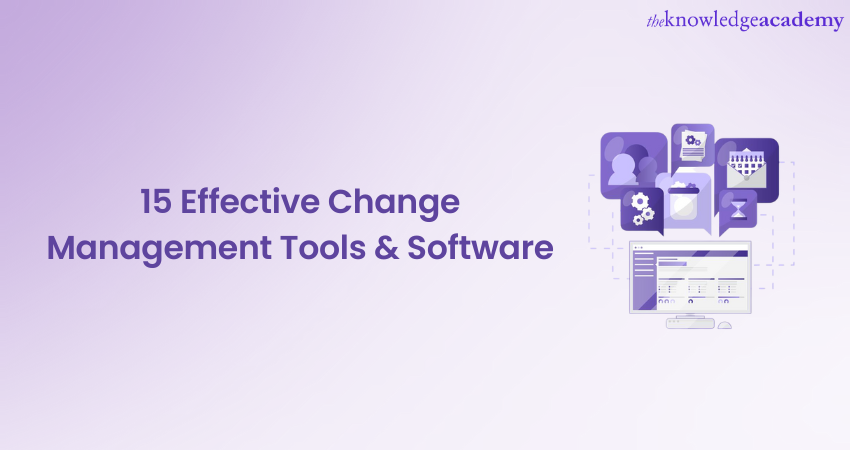
Change Management is a crucial aspect of any organisation's success. Having the right tools at your disposal is essential to navigate organisational changes smoothly. Change Management Tools help enhance efficiency, communication, collaboration, and decision-making during times of change, often leveraging various change management models.
Multiple enterprises today use Change Management Tools to enhance their Change Management strategies. Thus, it is crucial to learn about these software and tools for all organisations to manage change and drive success. This blog will discuss the most useful and effective Change Management Tools that you should be aware of to transform your organisation or business.
Table of Contents
1) What is a Change Management Tool?
2) Advantages of using Change Management Tools
3) When should you use a Change Management Tool?
4)Top 15 Change Management Tools
5) Conclusion
What is a Change Management Tool?
Any software or application which is used to plan, implement and track changes within an organisation is a Change Management Tool. The purpose of the tool is basically to ensure that there is no stress or tension during a Change process and the Change Management process is efficient
A Change Management Tool streamlines the process of introducing new technologies to an existing workflow, thus minimising the disruptions likely to occur. Employing different tools is crucial for a comprehensive Change Management strategy to attain optimal success with minimal associated risks. Change Management Tools provide businesses undergoing change with a proper structure to tackle complex changes and foster an environment of peace.. The tools are crucial in defining the objectives of the process and to allocate resources accordingly.
These tools also simplify the communication channels and enable greater collaboration among team members. By implementing greater sharing of information, and progress updates, these tools help keep all the team members on the same page.
Moreover, Change Management Tools offer data-driven insights by identifying potential roadblocks and evaluating the impact of changes. These insights help organisations track the performance of the changes being made and result in successful implementation of the changes proposed. Change Management Tools have become vital towards ensuring a smooth, well-coordinated, and successful transition during periods of change in organisations, promoting efficiency, transparency, and adaptability.
Advantages of using Change Management Tools
Using Change Management Tools provides organisations with distinct benefits which enable a structured and data-driven approach towards Change. Let's look at few of these benefits:
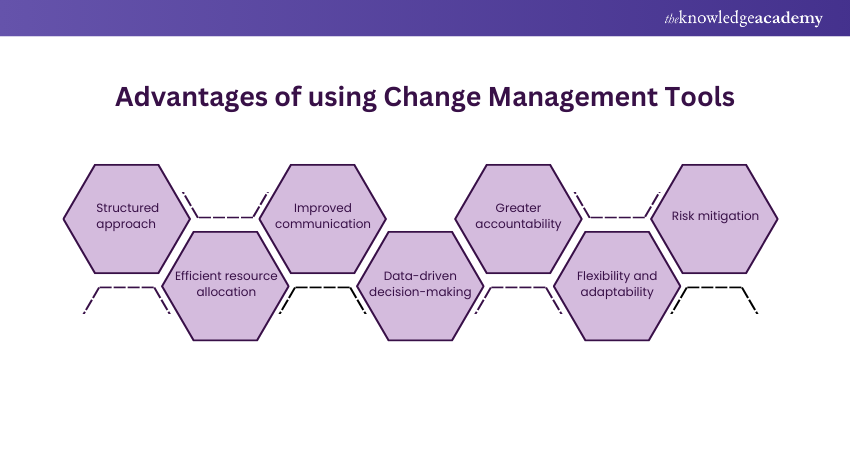
a) Structured approach: These tools offer an organised and systematic framework which can be applied for Change implementation. This makes the entire process well planned and hassle free.
b) Efficient resource allocation: These tools prevent resource wastage by allocating them effectively and ensuring optimal resource utilisation during the Change Management process.
c) Improved communication: Change Management Tools facilitate communication and collaboration between the team members. Thus, these allow for greater transparency and understanding in the team.
d) Data-driven decision-making: These tools allow data-driven decision-making by providing insights that help in the early identification of obstacles. The insights allow businesses to adapt early and ensure that the change process is successful.
e) Greater accountability: Change Management Tools assign responsibilities and track progress, promoting individual and team accountability, which is crucial for successful change implementation.
f) Flexibility and adaptability: Change Management Tools adapt to the evolving needs of an organisation, making them valuable assets in an ever-changing business environment. They also empower organisations to be more adaptable, responsive, and resilient in the face of change, ultimately driving long-term success.
g) Risk mitigation: These tools aid in risk mitigation by identifying potential obstacles early and thus allow organisations to address these issues proactively.
Ready to lead and drive success? Enroll in our Change Management Certification program to gain the skills and credentials you need.
When should you use a Change Management Tool?
Undestanding the fundamental principles of change management will greatly help in selecting the apt tool. A Change Management Principles can be used under the following circumstances:
a) When a new system or software is introduced in the process, the Change Management software can simplify its integration. The software can manage training programs for the new system and also log all the newly added processes. This makes onboarding the team members much easier and facilitates support and troubleshooting down the line.
b) Introducing or updating a complex process or workflow benefits from the use of Change Management Tools, aiding managers in task assignment, progress tracking and facilitating communication. They also help in automating alerts to maintain alignment and awareness among all parties.
c) To expedite the introduction and acceptance of a new project, a Change Management Tool can provide effective communication and collaboration features to ensure that project information and updates remain readily accessible to all stakeholders.
d) The Change Management Tools also provide platforms for engaging stakeholders, gathering feedback, addressing concerns, and nurturing a sense of ownership. They can also be used when efficient project planning and tracking capabilities are required with the help of Change management plan, tools can be used efficiently for project planning and tracking capabilities are required.. This enables teams to establish clear objectives, delegate tasks, and monitor real-time progress.
Do you want to learn some essential principles of the Change Management process? Sign up now for our Change Management Foundation Course!
Top 15 Change Management Tools
Change Management Tools help organisations assess the impact of change, communicate effectively with their team, track risks and issues, and measure performance, among other uses. Here are the top 15 tools used to simplify the process of Change Management:
1) Jira Service Management
Jira is a widely used powerful Information Technology Service Management (ITSM) solution provided by Atlassian. While primarily designed for managing IT service requests and incidents, Jira Service Management can also be leveraged as an effective Change Management tool. Here's how Jira Service Management supports Change Management processes:
a) Change request management: Jira Service Management allows organisations to define and manage change requests effectively. Users can submit change requests through a self-service portal, providing all the necessary details and documentation.
b) Change approval workflow: Jira Service Management provides customisable workflows that align with the best practices of Information Technology Infrastructure Library (ITIL) for Change Management.
c) Change authorisation: Approvers can review Change tickets, provide their input, and either approve or reject the Change. Organisations can ensure that only authorised personnel can approve or authorise Changes by defining roles, permissions, and access controls.
Get ready for your interview with our top Change Management Interview Questions.
2) Culture Mapping
Culture Mapping is one of the valuable Change management Tools that helps organisations understand and assess their current organisational culture and identify the cultural shifts necessary for successful change implementation. The following are some of its features:
a) Assessing culture: Culture Mapping enables organisations to assess their existing culture and deeply understand the shared beliefs, attitudes, and behaviours. It involves gathering qualitative and quantitative data through surveys, interviews, etc., allowing stakeholders to provide their perspectives and insights.
b) Identifying cultural gaps: By comparing the current state with the desired state, organisations can pinpoint areas where cultural change is needed to support the successful adoption of new practices, processes, or strategies.
c) Identifying Change Agents: Culture Mapping helps identify Change Agents or influential individuals within the organisation who can drive and champion cultural change.
Get Paid What You Deserve! Find out the latest change manager salary data. Learn More!
3) Wrike
Wrike is a versatile Change Management Tool, and its robust features and user-friendly interface offer several capabilities that support Change Management initiatives. Some of its features are as follows:
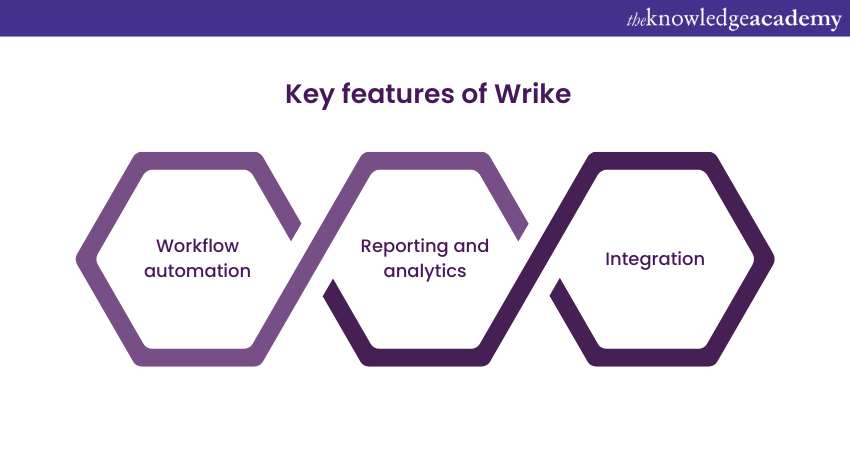
a) Workflow automation: Wrike offers powerful workflow automation features that streamline Change Management processes. Organisations can reduce manual effort and improve efficiency by automating repetitive tasks, approvals, and notifications.
b) Reporting and analytics: Wrike offers capabilities that provide valuable insights into Change Management performance. It provides customisable dashboards, Gantt charts, and reports that visualise project progress, resource allocation, and team productivity.
c) Integration: Wrike integrates with various other tools and platforms, allowing organisations to centralise their Change Management efforts. It integrates with communication tools like Slack and Microsoft Teams and file storage platforms like Google Drive and Dropbox.
Elevate your skills with our Change Management Black Belt training course. acquire expertise in driving successful transformations. Register now!
4) ADKAR Analysis
ADKAR stands for Awareness; Desire; Knowledge; Ability; and Reinforcement. The ADKAR analysis is a Change Management Tool that helps organisations understand and address the individual elements required for successful Change adoption. It provides a framework to assess and manage the people side of change, focusing on the psychological and behavioural aspects of individuals impacted by the Change. Here's how ADKAR Analysis can be used as a Change Management Tool:
a) Awareness: The first step in ADKAR Analysis is creating awareness among individuals about the need for change. This involves communicating the reasons, benefits, and urgency for the Change initiative.
b) Desire: The desire phase focuses on generating a personal commitment and motivation to embrace the change. By addressing misconceptions or fears, organisations can help individuals develop a desire to actively participate in and support the change.
c) Knowledge: The knowledge phase involves equipping individuals with the necessary knowledge and skills to adopt the change successfully. This includes providing training, resources, and guidance to ensure individuals have the required competencies to perform their roles in the new environment.
d) Ability: The ability phase focuses on enabling individuals to effectively apply the knowledge and skills acquired during the change. This may involve ongoing support, coaching, and resources to help individuals overcome challenges during the change process.
e) Reinforcement: The final phase of ADKAR Analysis is reinforcement, which aims to sustain the change over the long term. This involves recognising and celebrating successes, reinforcing new behaviours, and embedding the change into the organisational culture.
Discover the Impact of Change Management Salaries on Career Growth and Organizational Success!
5) The Change Compass
The Change Compass is a comprehensive Change Management Tool designed to assist organisations in planning, executing, and monitoring change initiatives. It provides a structured framework and a range of features to support the Change Management process. Here's an overview of how the Change Compass functions as a powerful Change Management Tool:
a) Change assessment: The Change Compass enables organisations to assess the readiness and impact of the proposed change. It helps identify the drivers and barriers to change, evaluate the organisational culture, and determine the scope and scale of the change initiative to ensure effective Change Management.
b) Effective communication: It provides tools for creating and distributing tailored communication materials to different stakeholder groups, which ensures that the right people receive the right information on time, thereby minimising resistance.
c) Integration and customisation: The Change Compass can integrate with other tools and systems used by organisations, like Project Management software or communication platforms. Additionally, the tool offers customisation options, enabling organisations to tailor the tool to their specific Change Management processes and requirements.
Discover the Best Change Management Books! Read our top picks and transform your organization today!
6) Stakeholder Analysis
Stakeholder Analysis is a valuable Change Management Tool that helps organisations identify, assess, and engage key stakeholders throughout the change process. Here are the vital features of Stakeholder Analysis:
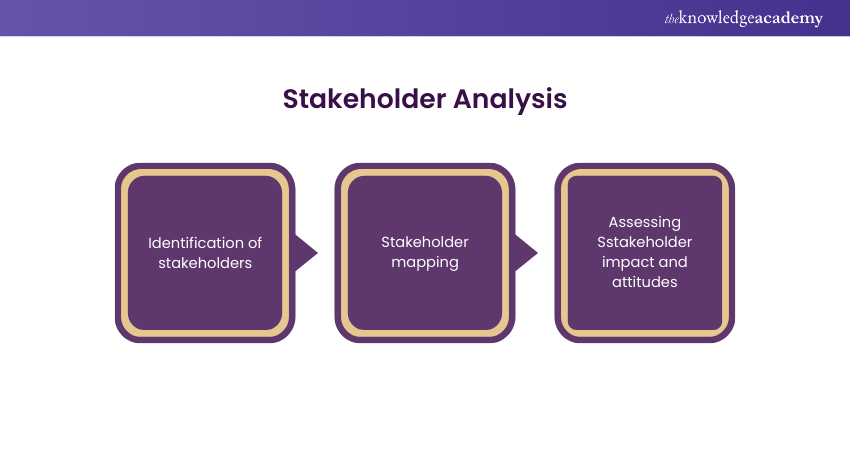
a) Identification of stakeholders: The first step in Stakeholder Analysis is identifying all relevant stakeholders. This includes individuals or groups directly affected by the change, those who have influence or power over the Change, and those who may be indirectly impacted.
b) Stakeholder mapping: Stakeholder mapping involves categorising stakeholders. The categorisation depends on their level of influence and interest in the change. This can be represented in a matrix with axes for influence and interest. The matrix helps identify key stakeholders who require special attention and engagement throughout the change process.
c) Assessing Sstakeholder impact and attitudes: Stakeholder Analysis helps organisations understand potential sources of resistance or support for the change. It enables them to tailor communication and Change Management approaches based on the specific needs of different stakeholders.
Learn how you can become a successful Change Management Practitioner with our Change Management Practitioner Course!
7) Force Field Analysis
Force Field Analysis is one of the best Change Management Tools that helps organisations identify and assess the forces that drive and restrain change. It provides a structured approach to understanding the factors influencing a change initiative. Let's look at some features of the tool:
a) Identifying driving and restraining forces: The first step in Force Field Analysis is identifying the driving forces that push for change and the restraining forces that hinder or resist change. Driving forces can include market demands, technological advancements, or competitive pressures while restraining forces can include organisational culture, fear of the unknown, or stakeholder resistance.
b) Assessment of force impact: Organisations assess their impact and importance after identifying the driving and restraining forces. This assessment helps prioritise the forces and understand their relative strengths, allowing them to focus their efforts on the most critical aspects of the change.
c) Visualisation through force field diagram: A force field diagram visually represents the driving and restraining forces. This diagram provides a clear and visual representation of the forces at play in the Change initiative.
8) Lewin’s Change Model
Lewin's Change Model is a widely recognised Change Management Tool developed by Psychologist Kurt Lewin. It provides a simple and intuitive framework for understanding and implementing organisational change. The model consists of three stages which are as follows:
a) Unfreeze: This stage involves preparing individuals and the organisation for change by creating awareness and establishing the need for change. It is utilised to create a sense of urgency, overcome resistance, and create a readiness for change through communication and involvement.
b) Change: The second stage of Lewin's Change Model is "Change" itself. In this stage, the change's actual transition or implementation occurs. It emphasises empowering individuals to participate in the Change process actively.
c) Refreeze: This stage involves anchoring the Change and making it a permanent part of the organisation's culture and operations. It refers to reinforcing the Change, embedding it in processes, and striving for continuous improvement.
9) Whatfix
Whatfix is a powerful Change Management Tool combining digital adoption, performance support, and process documentation for effective organisational change implementation. It offers multiple features designed to simplify Change Management and enhance user adoption:
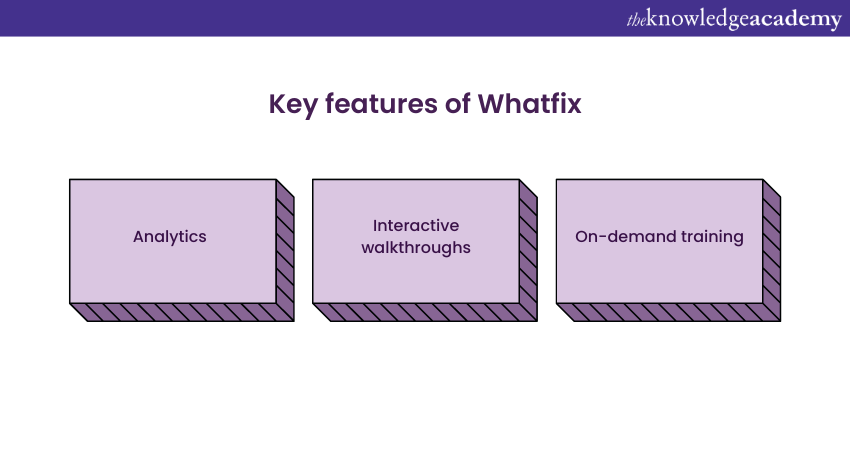
a) Interactive walkthroughs: Whatfix allows organisations to create interactive step-by-step walkthroughs to guide users through new processes, applications, or systems. These walkthroughs provide real-time, on-screen guidance, helping users understand and navigate the changes seamlessly.
b) On-demand training: Users can access contextual help, video tutorials, and knowledge-based articles relevant to their task. This feature provides just-in-time assistance, allowing users to find answers to questions or resolve issues instantly.
c) Analytics: Whatfix provides powerful analytics and reporting features that offer insights into user behaviour, adoption rates, and performance. Organisations can track user interactions, identify areas of difficulty or resistance, and measure the effectiveness of change initiatives.
Do you want to improve your job prospects in Change Management? Then register now for our Certified Professional Change Management (CPCM) Course!
10) BMC Remedy Change Management 9
BMC Remedy Change Management 9 is a robust and widely-used ITSM Tool that specifically focuses on Change Management. It offers comprehensive features and capabilities to streamline and automate the Change Management process within organisations. Some of the tool’s features include:
a) Change approval and review process: The tool provides a structured and customisable change approval and review process. It enables organisations to define approval workflows, assign appropriate approvers, and track the status of change approvals.
b) Change documentation: The tool includes features for documenting and managing change-related information and knowledge. It provides a centralised repository for storing change records, associated documentation, and knowledge articles.
c) Compliance and audit support: The tool helps organisations maintain compliance with regulatory requirements and policies. It enables organisations to define and enforce Change Management policies, capture and track compliance-related information, and generate audit reports when needed.
11) Rocket Aldon
Rocket Aldon is a Change Management tool for application development and release management. It provides multiple features that improve collaboration and enhance software development and deployment efficiency. Here are a few features of Rocket Aldon:
a) Version control and configuration management: The tool offers robust version control and configuration management capabilities. It allows developers to track and manage different versions of source code, ensuring that changes are properly tracked and audited.
b) Release management: The tool helps organisations manage the release process by providing features for planning, coordinating, and tracking software releases. It allows users to define release packages, schedule deployments, and track the progress of releases.
c) Deployment automation: It supports the automation of deployment tasks, such as compiling, packaging, and deploying applications. This feature helps reduce manual effort and improve the speed and accuracy of software deployments.
12) StarTeam
StarTeam, developed by Micro Focus, is one of the most versatile Change Management Tools designed to streamline and manage software development processes. It offers numerous features to facilitate collaboration, version control, and workflow management. Some features of the tool include the following:
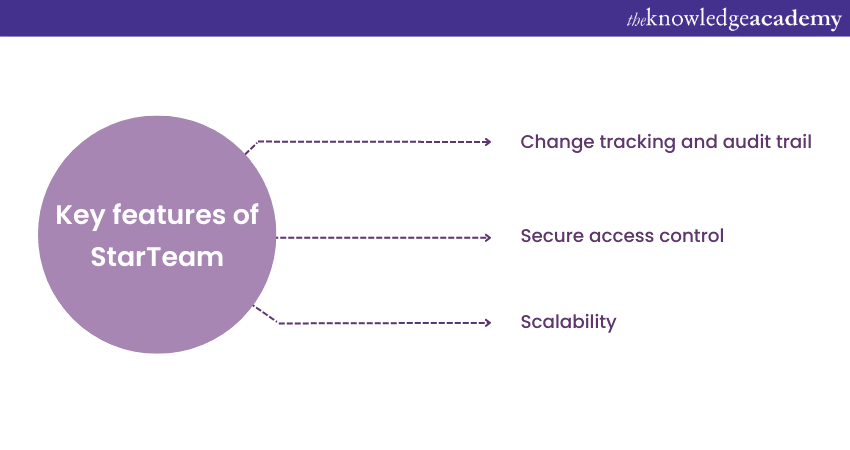
a) Change tracking and audit trail: The tool offers a detailed change tracking mechanism that records all modifications made to development assets. This creates an audit trail, providing visibility into who and when the Changes were made, and the purpose behind each change.
b) Secure access control: StarTeam includes robust access control mechanisms that allow administrators to define granular permissions for users and user groups. It ensures that only authorised individuals can access and modify specific development assets, protecting the integrity and confidentiality of the codebase.
c) Scalability: StarTeam is designed to handle large-scale development projects and distributed teams. It supports multiple repositories, enabling teams to manage multiple projects simultaneously.
Learn how you can manage change with Agile Methodology – register now with our Managing Change with Agile Methodology Training!
13) Change and Release Management Application
ServiceNow's Change and Release Management Application is a powerful Change Management Tool that enables organisations to effectively manage and control changes to their IT infrastructure and applications. Some features of the tool are as follows:
a) Change request management: The application offers a centralised platform for submitting, reviewing, and managing change requests. It allows users to define the nature of the change, assess its impact and risk, and obtain necessary approvals.
b) Change planning: ServiceNow's Change and Release Management application help organisations plan and schedule changes effectively. It provides features for assessing the impact of Changes on IT services, applications, and infrastructure.
c) Configuration Management Database (CMDB) integration: ServiceNow's Change and Release Management Application integrate with CMDB, allowing organisations to maintain accurate information about the IT infrastructure.x
14) Howspace
Howspace is a versatile collaboration platform that enables organisations to facilitate effective teamwork, engagement, and knowledge sharing among teams and stakeholders. Here are some of the features of Howspace that contribute to effective Change Management:
a) Virtual collaboration space: Howspace provides a virtual space where teams can collaborate, share ideas, and work on projects. It offers a centralised platform for communication and collaboration, eliminating the need for multiple tools and email threads.
b) Discussion forums and chat: With this feature, users can create topic-specific discussion threads, participate in conversations, and exchange ideas. The chat feature enables real-time communication, allowing for quick and efficient collaboration.
c) Surveys and polls: Users can create surveys and questionnaires to collect data and analyse results. This feature is useful for conducting assessments and gathering feedback during Change Management initiatives.
15) The Change Shop
The Change Shop consists of six vital tools characterised by their ability to simplify Change Management processes. It allows for checking employee engagement levels, tracking progress, and detecting issues and has features like:
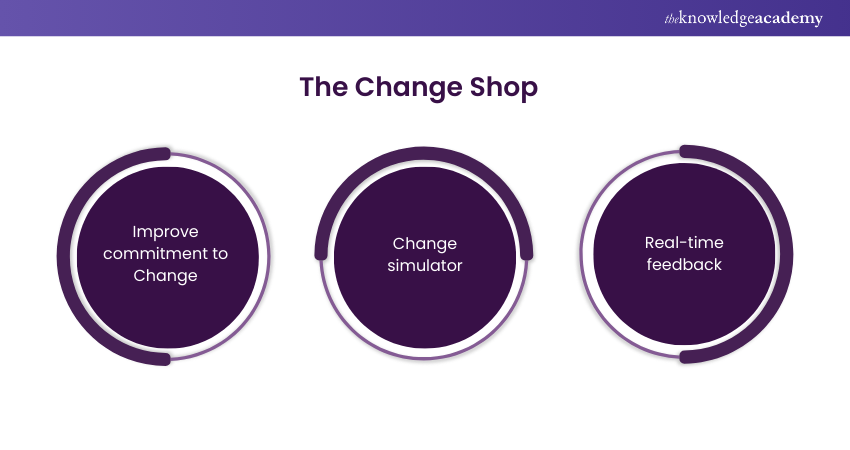
a) Improve commitment to Change: The Change Shop is an easy-to-use Change Management Tool and interactive solution that allows organisations to create buy-in, improve the dedication to change, and effectively implement change across various levels of an enterprise.
b) Change simulator: One of the most useful features of the change Shop is its ability to create potential scenarios that allow users to determine the possible risks that can affect an organisation upon implementing a certain change(s).
c) Real-time feedback: This feature helps organisations acquire important information about employee engagement with the Change. The tool also allows the comparison of your team’s results with that of different organisations.
Dive into the detailed Case Study on Change Management
Conclusion
Change Management Tools provide structure and automation, enabling organisations to streamline changes. We hope that this blog has helped improve your understanding of the 15 best Change Management Tools and their features.
Ready to take your Change Management skills to the next level? Register in our Change Management Green Belt course.
Frequently Asked Questions

The various Tools of Change Management are:
a) Guru
b) ManageEngineServiceDesk Plus
c) Wrike
d) SysAid
e) Whatfix

The 5Cs of Change Management are:
a) Culture
b) Communication
c) Compassion
d) Conviction
e) Courage

The Knowledge Academy takes global learning to new heights, offering over 30,000 online courses across 490+ locations in 220 countries. This expansive reach ensures accessibility and convenience for learners worldwide.
Alongside our diverse Online Course Catalogue, encompassing 17 major categories, we go the extra mile by providing a plethora of free educational Online Resources like News updates, Blogs, videos, webinars, and interview questions. Tailoring learning experiences further, professionals can maximise value with customisable Course Bundles of TKA.

The Knowledge Academy’s Knowledge Pass, a prepaid voucher, adds another layer of flexibility, allowing course bookings over a 12-month period. Join us on a journey where education knows no bounds.

The Knowledge Academy offers various Change Management Courses, including Change Management Foundation, Practitioner, and Risk Management for Change Training. These courses cater to different skill levels, providing comprehensive insights into Change Management skills.
Our Project Management blogs covers a range of topics related to Change Management, offering valuable resources, best practices, and industry insights. Whether you are a beginner or looking to advance your Change Management skills, The Knowledge Academy's diverse courses and informative blogs have you covered.
Upcoming Project Management Resources Batches & Dates
Date
 Change Management Foundation & Practitioner
Change Management Foundation & Practitioner
Mon 25th Nov 2024
Mon 2nd Dec 2024
Sat 7th Dec 2024, Sun 8th Dec 2024
Mon 9th Dec 2024
Mon 16th Dec 2024
Mon 6th Jan 2025
Mon 13th Jan 2025
Mon 20th Jan 2025
Mon 27th Jan 2025
Mon 3rd Feb 2025
Mon 10th Feb 2025
Mon 17th Feb 2025
Mon 24th Feb 2025
Mon 3rd Mar 2025
Mon 10th Mar 2025
Mon 17th Mar 2025
Mon 24th Mar 2025
Mon 31st Mar 2025
Mon 7th Apr 2025
Mon 28th Apr 2025
Mon 12th May 2025
Mon 19th May 2025
Mon 9th Jun 2025
Mon 23rd Jun 2025
Mon 7th Jul 2025
Mon 21st Jul 2025
Mon 4th Aug 2025
Mon 18th Aug 2025
Mon 1st Sep 2025
Mon 15th Sep 2025
Mon 29th Sep 2025
Mon 13th Oct 2025
Mon 20th Oct 2025
Mon 27th Oct 2025
Mon 3rd Nov 2025
Mon 10th Nov 2025
Mon 17th Nov 2025
Mon 24th Nov 2025
Mon 1st Dec 2025
Mon 8th Dec 2025
Mon 15th Dec 2025







 Top Rated Course
Top Rated Course



 If you wish to make any changes to your course, please
If you wish to make any changes to your course, please


